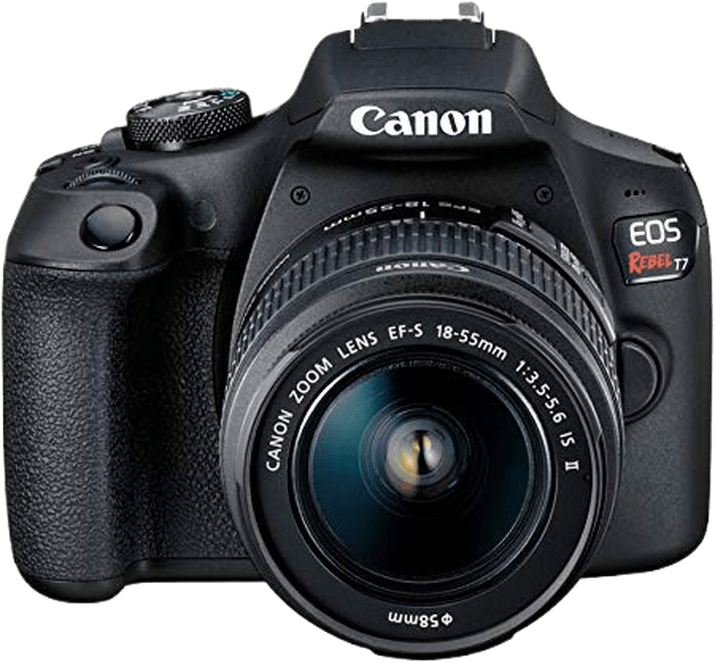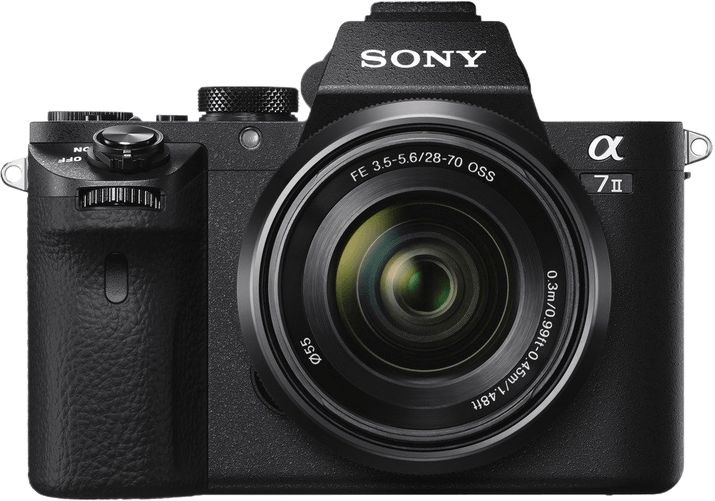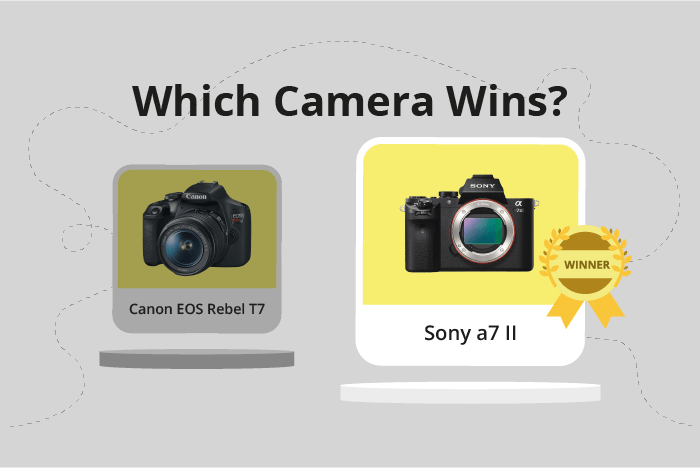Canon EOS Rebel T7 / 2000D vs Sony a7 II Comparison
Canon EOS Rebel T7 / 2000D

Sony a7 II

The Sony a7 II emerges as the winner with a score of 69/100, while the Canon EOS Rebel T7 / 2000D trails behind at 50/100. Both cameras share similarities such as their announcement dates in the 2010s and their respective launch prices. However, the Sony a7 II surpasses the Canon T7 in terms of camera size and weight, boasting a more compact design and lighter weight at 127 x 96 x 60mm and 599g.
On the other hand, the Canon T7 has its own advantages, such as a lower launch price of $550 compared to the Sony a7 II’s $1600. This makes the Canon T7 a more budget-friendly option for those looking for an affordable camera.
Taking these factors into account, the Sony a7 II stands out as the better camera due to its higher score, compact design, and lighter weight. However, the Canon T7 remains a viable choice for those seeking a more affordable option.
Canon EOS Rebel T7 / 2000D vs Sony a7 II Video Performance
The Sony a7 II outperforms the Canon EOS Rebel T7 / 2000D in video capabilities, with a 13-point lead in video score, 56/100 for the Sony a7 II and 43/100 for the Canon T7 / 2000D. Both cameras share some common specifications: they offer Full HD video resolution with maximum dimensions of 1920 x 1080, and neither of them has built-in time-lapse functionality.
The Sony a7 II takes the lead in video performance due to its higher maximum video frame rate of 60fps, compared to the Canon T7 / 2000D’s 30fps. This allows the Sony a7 II to capture smoother and more detailed video footage, especially when recording fast-moving subjects or scenes. The higher frame rate also provides more flexibility for slow-motion playback during post-processing.
On the other hand, the Canon T7 / 2000D does not offer any significant advantages in video capabilities over the Sony a7 II. Both cameras share the same maximum video resolution and dimensions, and neither has built-in time-lapse functionality. The only area where the Canon T7 / 2000D matches the Sony a7 II is in these shared specifications.
Given these factors, it is clear that the Sony a7 II holds a considerable advantage in video capabilities over the Canon EOS Rebel T7 / 2000D. This is primarily due to its higher maximum video frame rate, which results in smoother and more detailed footage. The Canon T7 / 2000D, on the other hand, does not offer any notable benefits in this area and only matches the Sony a7 II in basic video specifications.
Canon EOS Rebel T7 / 2000D vs Sony a7 II Features and Benefits
The Sony a7 II wins the features comparison with a score of 57/100, while the Canon EOS Rebel T7 / 2000D scores 41/100. Both cameras share several specifications, including a 3-inch screen size, flip screen, absence of GPS, and WIFI connectivity. Neither camera offers a touchscreen or Bluetooth.
The Sony a7 II has a higher screen resolution of 1,230,000 dots compared to the Canon T7’s 920,000 dots. This difference provides the Sony a7 II with superior image clarity and a better viewing experience while composing and reviewing photos.
On the other hand, the Canon T7 does not have any specific features that make it better than the Sony a7 II. Instead, the T7 shares the same basic features as the a7 II, such as WIFI connectivity and a flip screen, which are essential for modern photography.
Considering the differences in feature scores and the higher screen resolution of the Sony a7 II, this camera is the better option between the two. The Canon T7, while not having any standout features, still provides a decent set of specifications for beginner photographers. However, the Sony a7 II’s superior screen resolution offers a more enjoyable user experience, making it the recommended choice.
Canon Rebel T7 vs Sony a7 II Storage and Battery
The Sony a7 II outperforms the Canon Rebel T7 in storage and battery , but it’s close! Both cameras share similarities, such as having one memory card slot and accepting SD, SDHC, and SDXC memory cards. Onlt the a7 II offers USB charging.
The Canon T7 / 2000D excels with a longer battery life of 500 shots, using the LP-E10 battery type. This advantage allows users to capture more photos before needing to replace or recharge the battery. On the other hand, the Sony a7 II has a shorter battery life of 350 shots, utilizing the NP-FW50 battery type.
Despite its lower score, the Sony a7 II offers additional memory card compatibility by supporting Memory Stick Duo, Pro Duo, and Pro-HG Duo cards. This flexibility may be beneficial for users with existing Memory Stick cards.
Considering these factors, the Canon T7 is a better choice for users prioritizing battery life, while the Sony a7 II provides more versatility in memory card options and charging.
Canon EOS Rebel T7 / 2000D vs Sony a7 II – Our Verdict
Are you still undecided about which camera is right for you? Have a look at these popular comparisons that feature the Canon EOS Rebel T7 / 2000D or the Sony a7 II:

